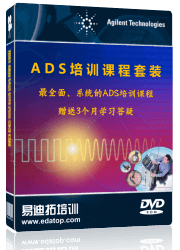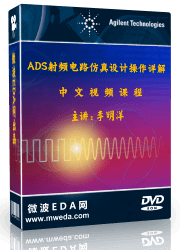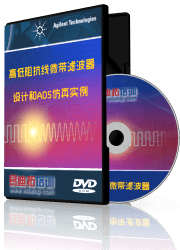- 易迪拓培训,专注于微波、射频、天线设计工程师的培养
[SOLVED] Varactor modeling using HFSS+ADS
I'm an undergraduate student and as a part of my final project I need to model a varactor diode using a waveguide. I've design a simple model in the HFSS, drawing the waveguide and the terminals of the diode, with 3 ports: 2 wave ports for the waveguide and 1 lumped port linking both terminals.
The idea is to export the 3x3 S Matrix to ADS and using that program, along with the measurements, to find a good model of de varactor. But I have a few questions regarding this process:
1) About the lumped port: should it have the dimensions of the actual diode or is it enough to draw a sheet that fits the diameter of the terminals?
2) If the waveguide is drawn in the way that its biggest dimension is along x axis, I understand that, depending on how I draw the lumped port it can affect the results. So, how should I draw the 2D sheet that represents the lumped port? I've drawn it in the XZ plane so it minimize the perturbation over the E field which propagates inside the waveguide, but I'm not sure if that's okey.
3) Once I export the 3x3 S Matrix and put it in a S3P box, a couple of questions arise:
3a) In two of the three ports I have to put Terms to obtain the S Matrix from the simulations. Those would be the wave ports of the waveguide. So I only have left the lumped port to put my varactor model. Does the model have to be connected between that port and ground?
3b) In HFSS there's no ground. How does the fact that in ADS you have a ground affect the results from simulations? Because the varactor would be connected between two terminals, not the lumped port and ground as it would be in ADS...
Thanks in advance for your answers.
Regards,
Daniel.
Well, I've got the answer for some of the questions, in case someone is interested. Though they might not be too accurate, it's what I found out asking some people and through simulations.
1) They should fit the diameter of the pin, not the real dimesions of the diode. It's a lumped port to get the 3x3 S Matrix, not the diode.
2) The diferences between both representations are too small, so doesn't matter in which plane the port is drawn.
3a) Yep, that's the way of connect the diode.
3b) The ground is to refer all the S parameters to the same point.
So I think all the problems are solved, unless someone has a better approach.
BTW: I'm doing some simulations to check that the results between HFSS and HFSS+ADS are consistent and they are good.
申明:网友回复良莠不齐,仅供参考。如需专业帮助,请学习易迪拓培训专家讲授的ADS视频培训课程。
上一篇:defining ground plane in ads 2011 momentum setup
下一篇:Problem with EM/CKT co-simulation with ADS
ADS中文视频培训教程 | More...
 国内最全面、最专业的Agilent ADS培训课程,可以帮助您从零开始,全面系统学习ADS设计应用【More..】
国内最全面、最专业的Agilent ADS培训课程,可以帮助您从零开始,全面系统学习ADS设计应用【More..】
- Agilent ADS教学培训课程套装
- 两周学会ADS2011、ADS2013视频教程
- ADS2012、ADS2013射频电路设计详解
- ADS高低阻抗线微带滤波器设计培训教程
- ADS混频器仿真分析实例视频培训课程
- ADS Momentum电磁仿真设计视频课程
- ADS射频电路与通信系统设计高级培训
- ADS Layout和电磁仿真设计培训视频
- ADS Workspace and Simulators Training Course
- ADS Circuit Simulation Training Course
- ADS Layout and EM Simulation Training Course
- Agilent ADS 内部原版培训教材合集









 沪公网安备 31011202014168号
沪公网安备 31011202014168号
 1427313829
1427313829 旺旺在线
旺旺在线 Skype Online
Skype Online 13761612886
13761612886 官方淘宝店
官方淘宝店
